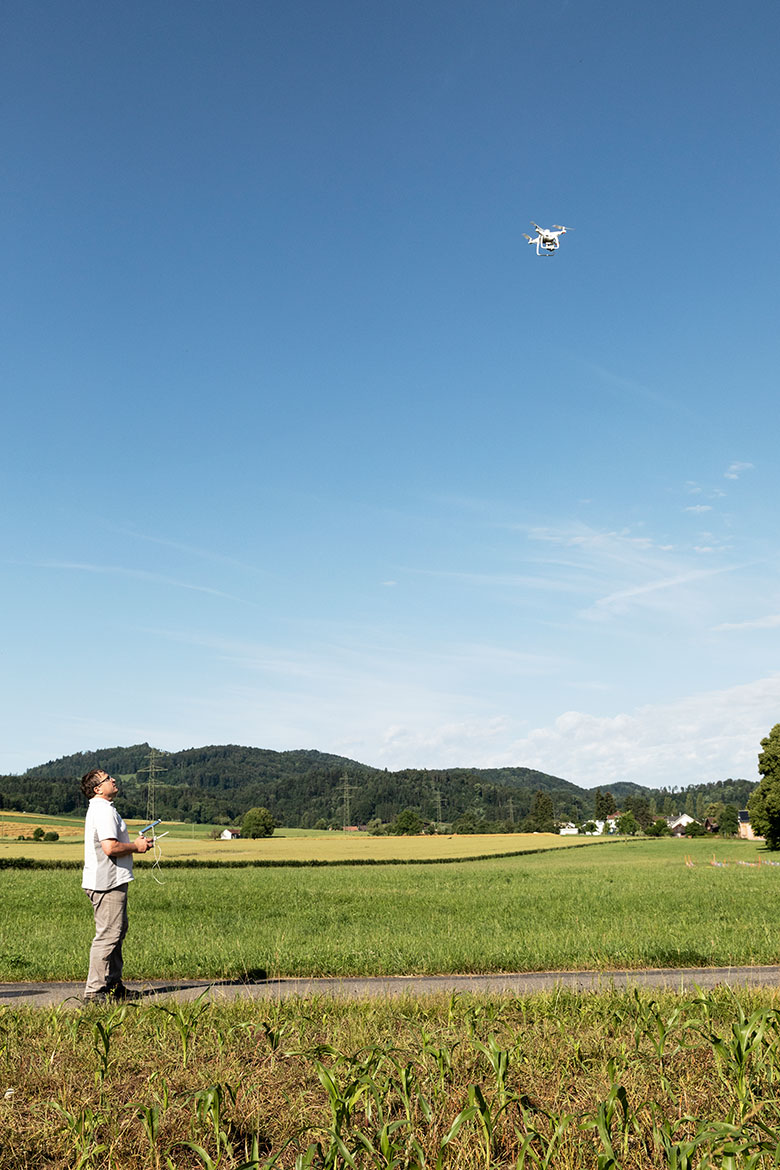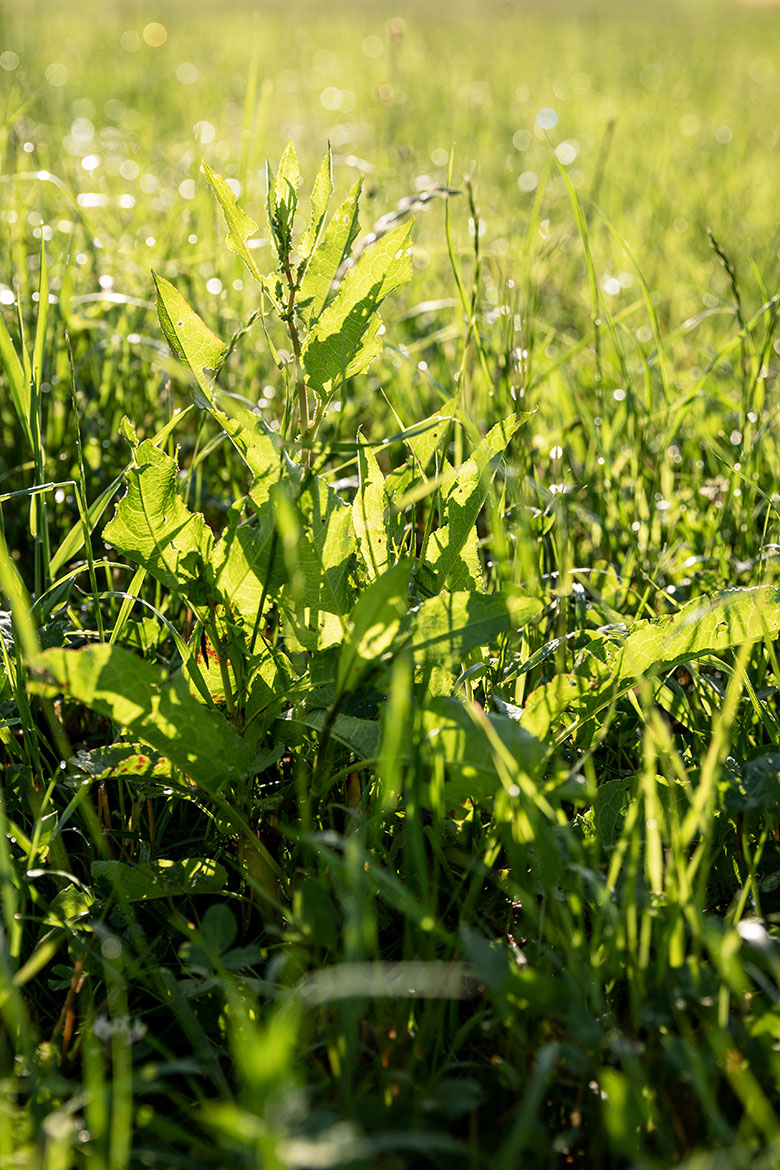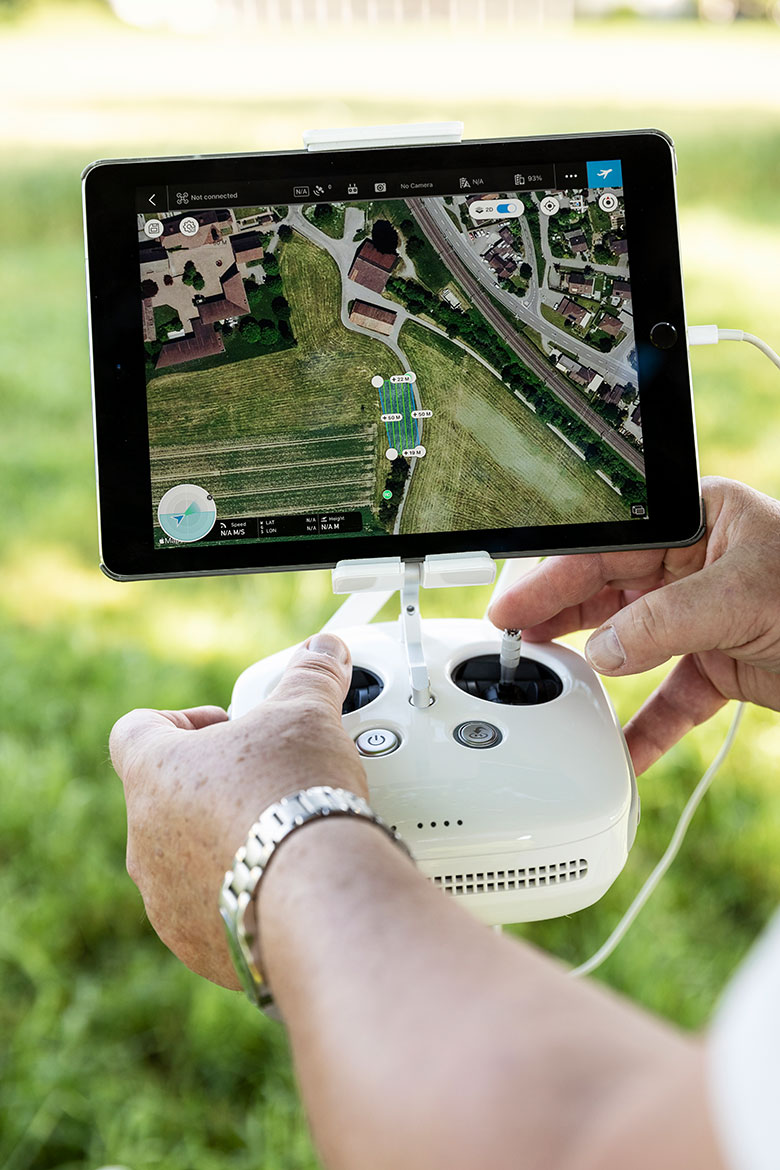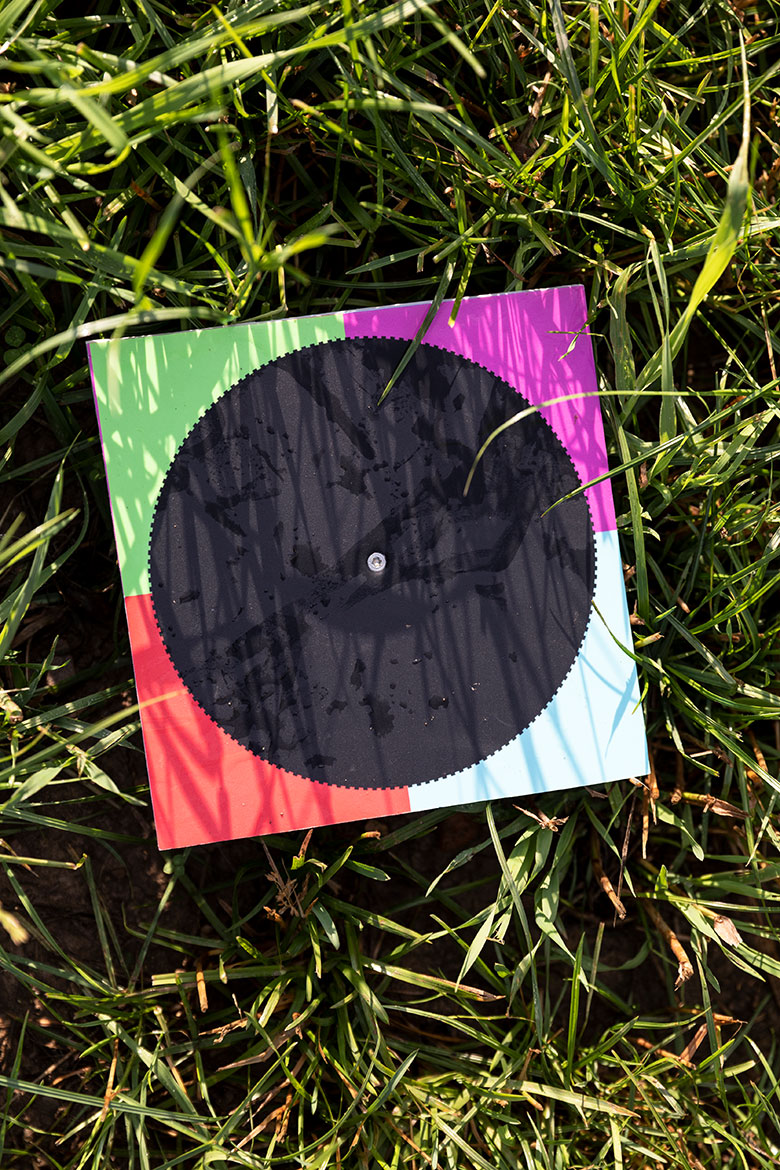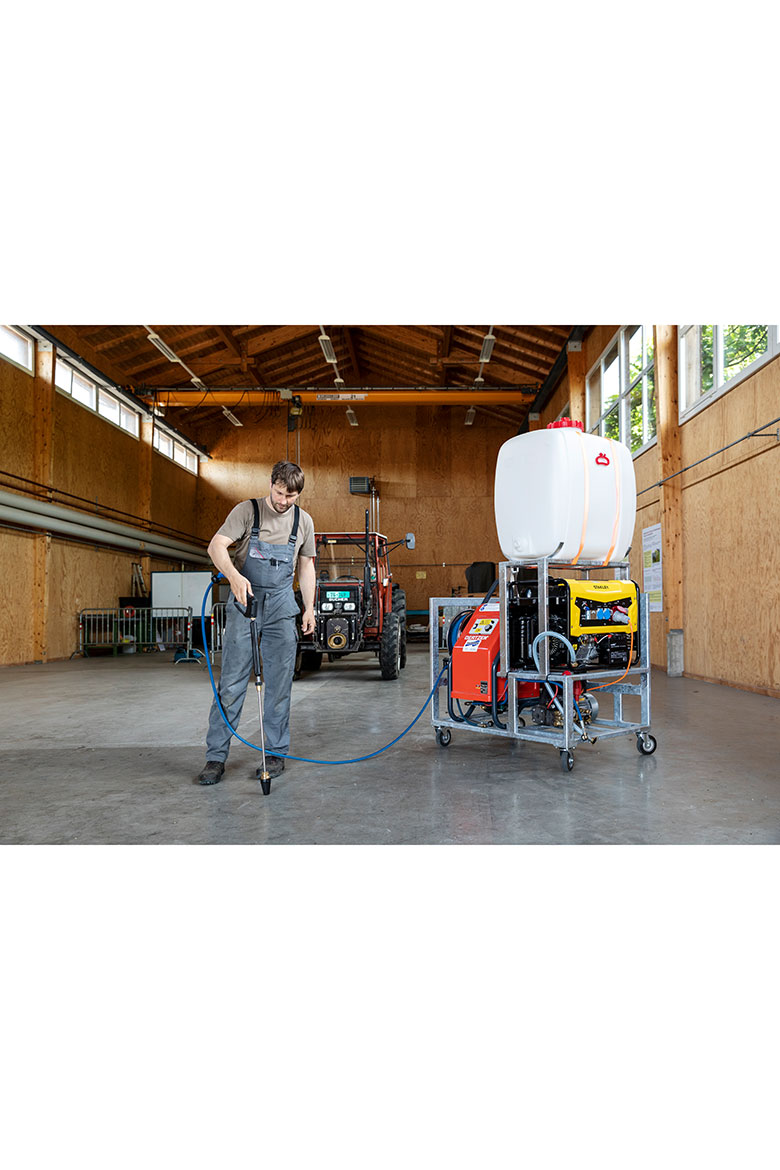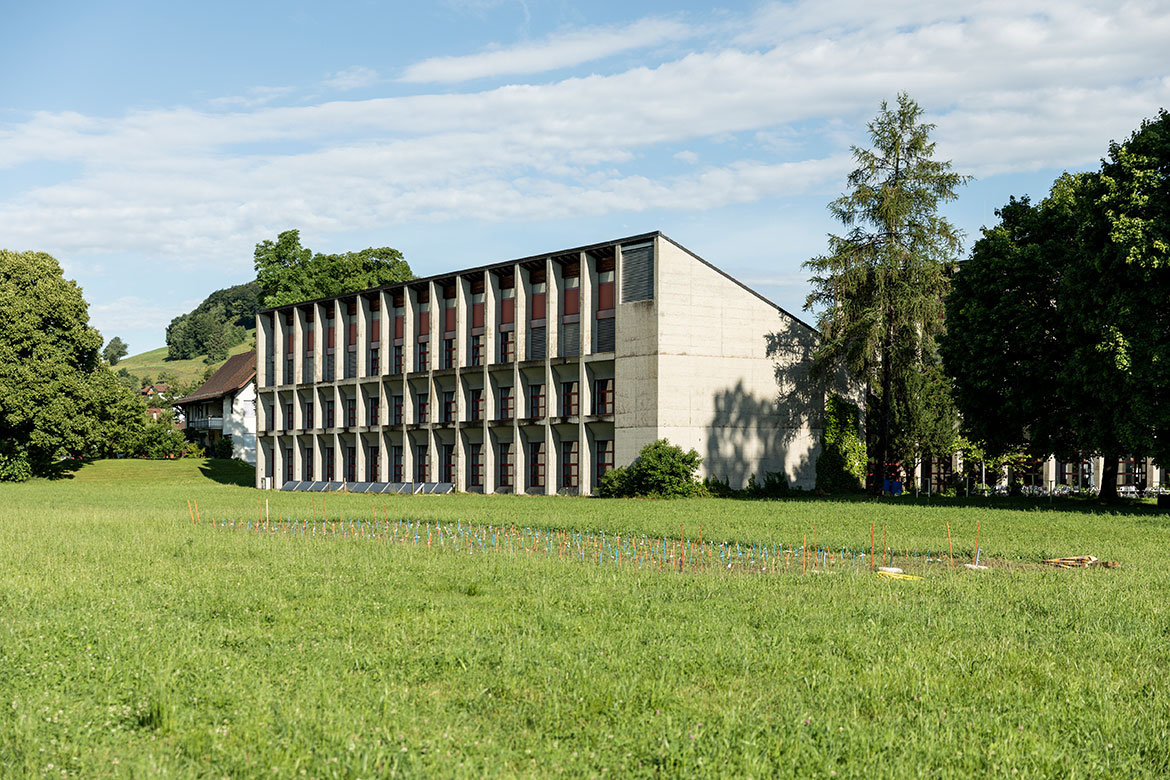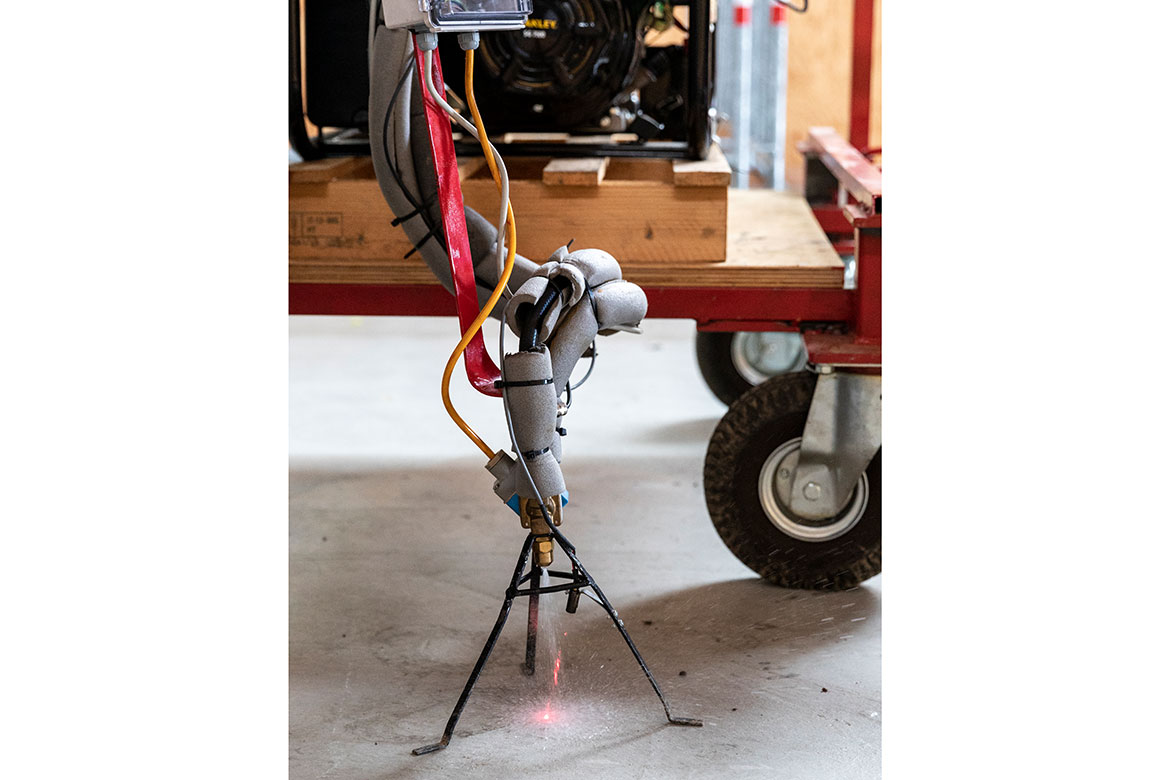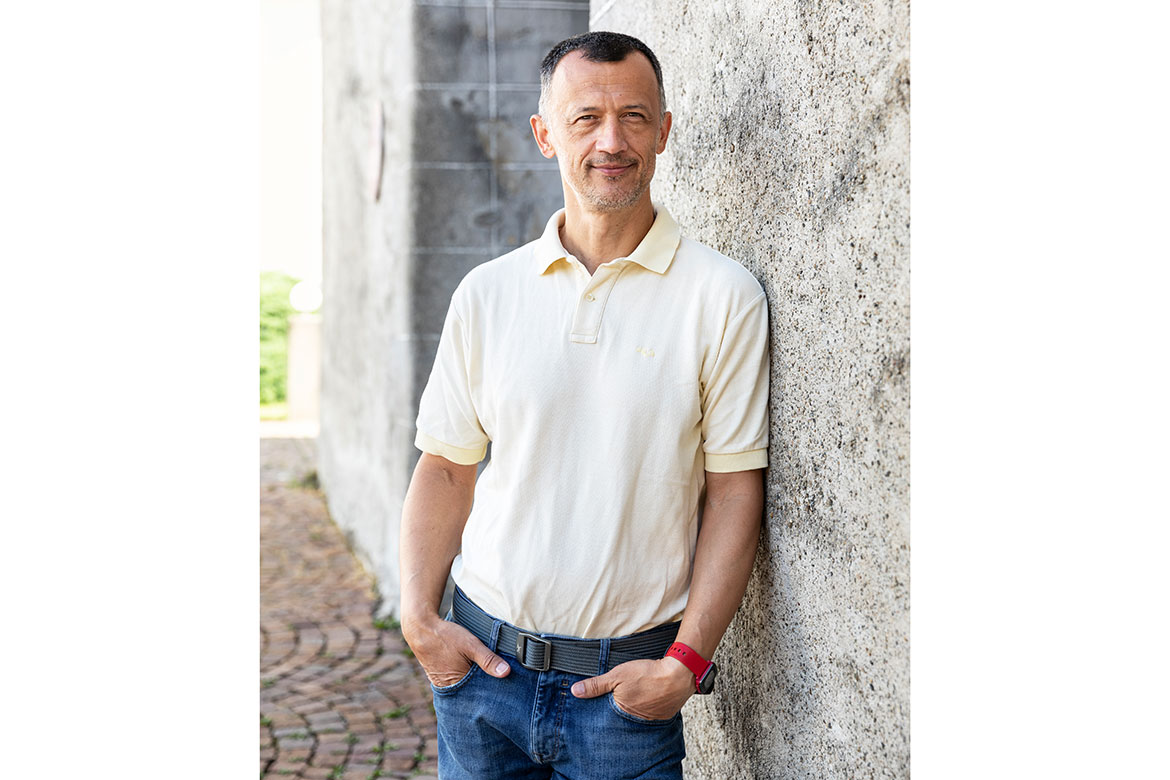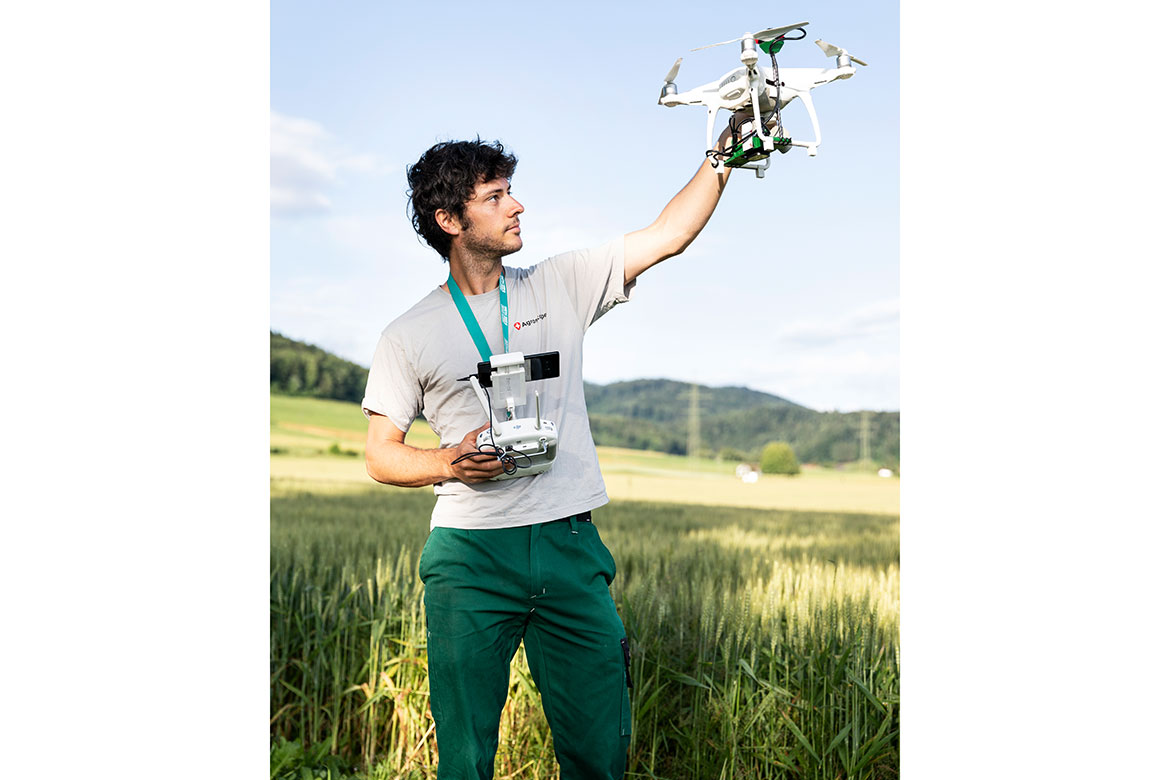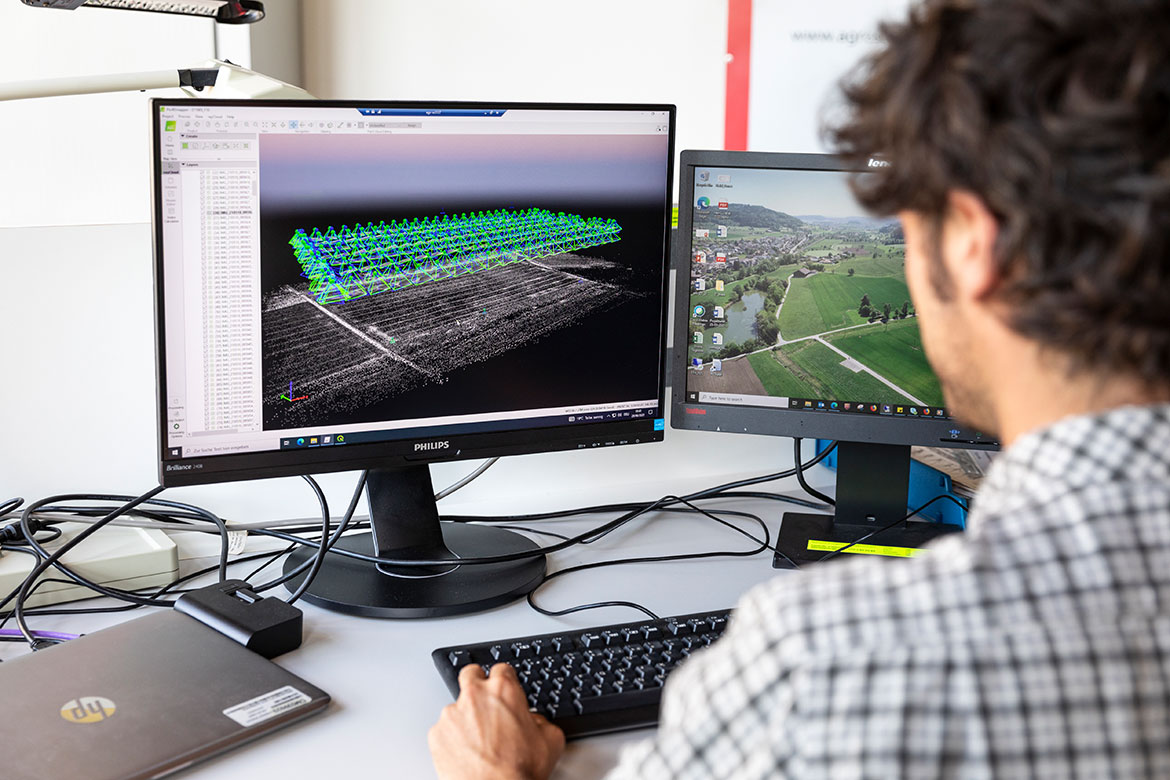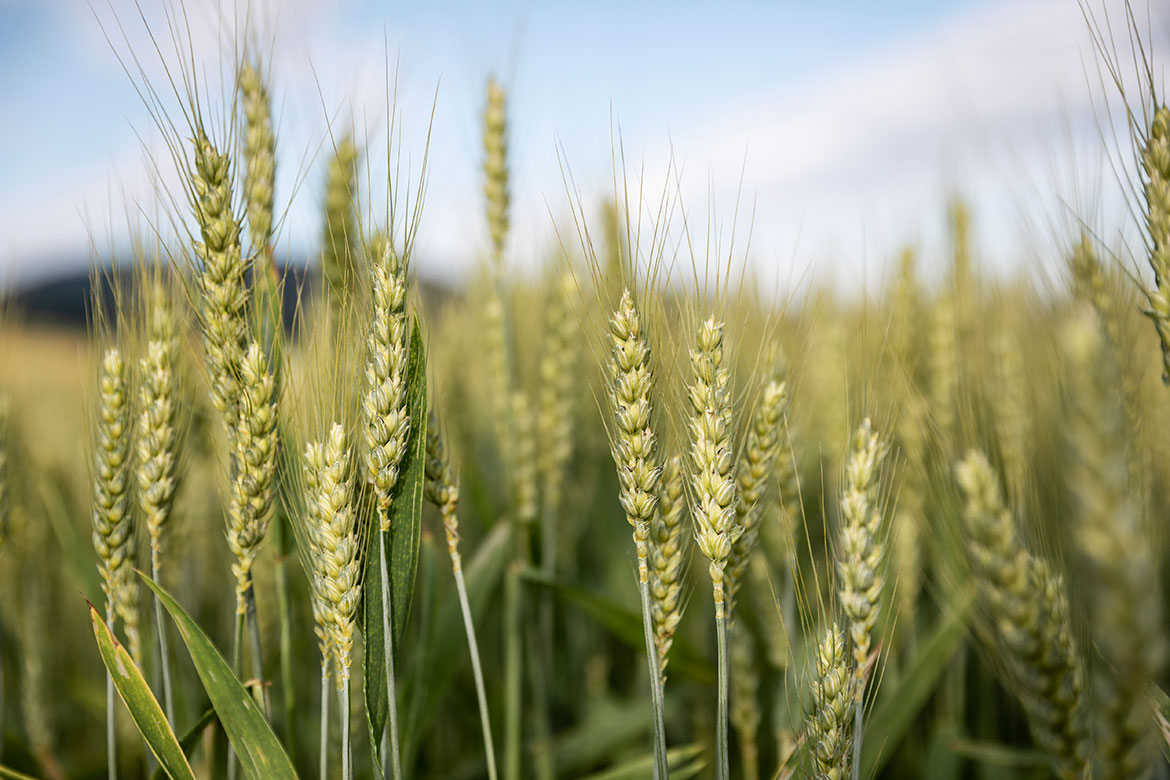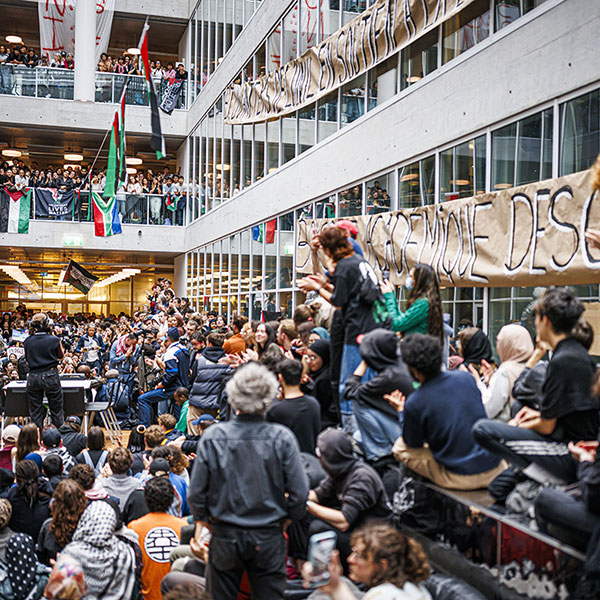Report
Sci-fi agriculture in the here and now
The pinpoint application of fertiliser to a field of wheat, or the precise elimination of a super-weed: drones are replacing the agricultural technology of old. We take a closer look from above, in the fields of north-eastern Switzerland.
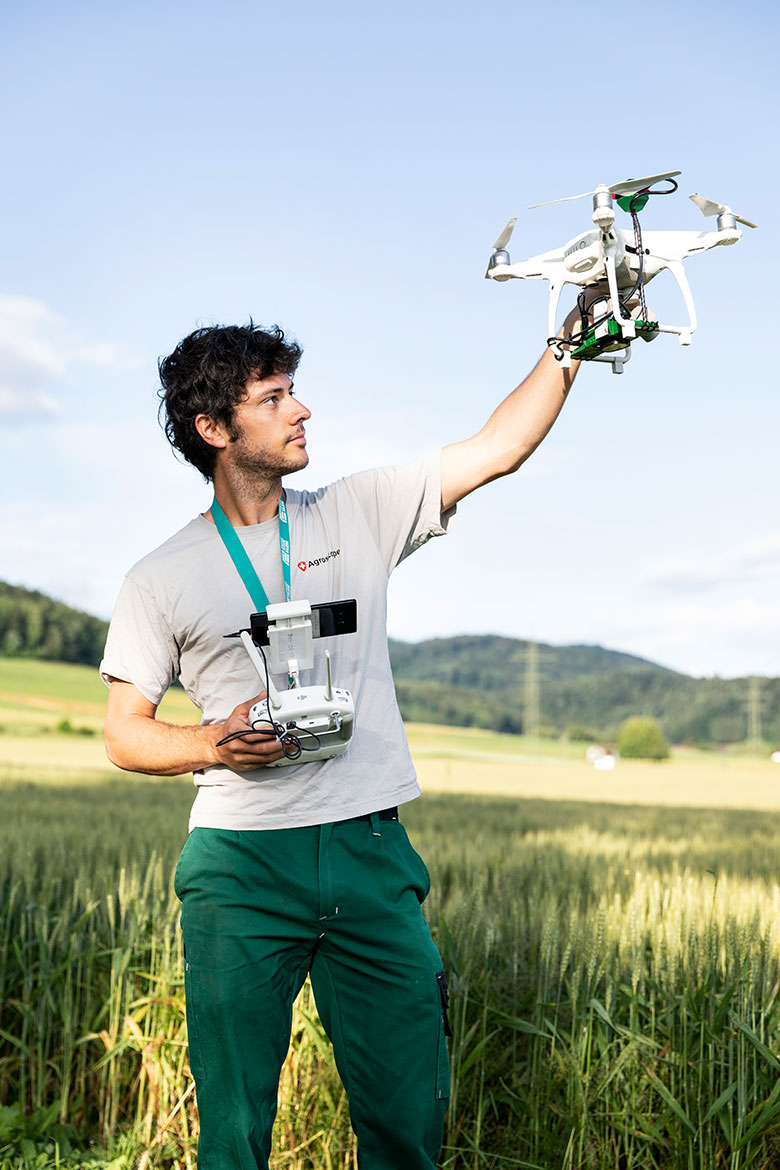
Soon it will fly off and scour the wheatfields for plants that need fertiliser: drones are agriculture’s newest helpers. | Photo: Gabi Vogt
It’s a cold morning, but Markus Sax appears at seven a.m. on the dot in a t-shirt. He has an iPad in one hand, a black polystyrene box in the other. Sax is the project head of the group ‘Digital Production’ at Agroscope, the Swiss Federal Competence Centre for agricultural research. We’re in Tänikon, an idyllic spot some 20 miles north-east of Zurich. Clutching his mysterious box, he strides across the meadow still wet from last night’s rain. His target is broad-leaved dock, the queen of all weeds.
After a few dozen metres, with his shoes already completely sodden with water, he stops: “We’ve got a few nice examples here”, he says. Three broad-leaved dock plants rise up from the meadow like little towers. Their seed stalks are just beginning to mature. Once we’re on an adjacent dirt road, Sax opens the lid of his box and takes out a drone. It’s got four powerful rotors and a white chassis that has a camera fixed to its underside. Sax opens the remote control on his iPad and enters the flight plan. He draws a rectangular box on an aerial photograph of the meadow. A row of parallel lines appears across the rectangle: these delineate the flight path of the drone. A moment later, it’s already in the air. It takes a picture every two seconds as it flies. Later, a computer program will turn these images into a single, high-resolution aerial photo.
Using this composite photo, artificial intelligence is employed to recognise the sites of every broad-leaved dock plant and calculate their coordinates down to the last centimetre. In theory, it could then send this data to a robot that would go out and kill off every individual plant with a targeted dose of herbicide. It would save the farmers time, and the environment would be contaminated with only a minimum of poisonous herbicide. This, at least, is the goal of Sax and his partners in research and industry, which include the Eastern Switzerland University of Applied Sciences (FHO) and the agricultural cooperative fenaco. But it will still take a few more years before everything functions seamlessly. At the moment, the researchers are still testing the individual steps of the process.
A terminator for super-weeds
It’s not by chance that robotics and artificial intelligence are being drawn upon to combat an unassuming weed such as the broad-leaved dock. It is a declared enemy of all farmers. Cows spurn it because dock plants contain a lot of oxalic acid. Nor is that its only unpleasant characteristic. “Broad-leaved dock plants form large leaves that deprive the surrounding grass of sunlight”, explains Sax. The grass dies off, which then reduces the yield of the meadow. These plants also cause more problems under the ground. “Their taproots penetrate deep into the soil and deprive it of nutrients that are really intended for the grass”.
This taproot has been costing generations of farmers time and energy for centuries now. “If you just mow it down, new shoots sprout up”, says Sax. In order to remove the weed on a long-term basis, the root has to be dug out as far down as possible using a ‘dock weeder’. Doing this over the space of just one hectare can take a whole day. Another option is controlling it with a chemical herbicide by spraying the whole meadow. Since the herbicide specifically targets the broad-leaved dock, the grass remains undamaged. However, this poisonous substance also enters the soil, and from there it finds its way into the groundwater. What’s more: the problem still returns every year, like an evil curse. “One plant can produce up to 60,000 seeds, and they remain capable of germination in the soil for up to 30 years”, says Sax. Dealing with this biological timebomb is an endless activity, so it’s worthwhile conducting research into it.
Back in the office in Rapperswil, we meet Dejan Šeatović, a professor of measuring technology and mechatronics at FHO. He shows us how a robot can be turned into a weed killer. On the table before him lies a large sheet of paper with a meadow printed on it, seen from above. Šeatović holds a webcam over it, and its picture appears on the screen next to him. As if by magic, all the broad-leaved dock plants appear pink on it. This tour de force is achieved by a little box that is attached to the camera. “It’s like a graphics card on steroids”, says Šeatović proudly. It is run using Facebook’s facial-recognition software. “We fed thousands of images of broad-leaved dock plants into it, and thereby taught it to recognise the weed”.
Now, they just need a robot to dispense a small dose of herbicide on every broad-leaved dock plant. Their robot of choice is the model ‘SPOT’ made by the American company Boston Dynamics. It looks like a yellow, headless dog. But they’ve only just acquired it, and the researchers first have to equip it with herbicide-spraying nozzles. Until they’ve managed this, Sax is testing the concept using a common-or-garden sprayer. This is a trailer equipped with GPS, electronics and a series of nozzles situated along a boom. “We then use a tractor to drag the trailer across the field”, says Sax. “As soon as one of the nozzles reaches the coordinates of a broad-leaved dock plant, it ejects a small spray of herbicide”. Initial tests have shown that this method enables them to use 90 percent less herbicide than if they spray the whole meadow.
A dialogue with a wheatfield
We now move on to Francesco Argento, who also works in the Digital Production research group, and whose office is one door down the corridor from Šeatović. In collaboration with ETH Zurich and the Swiss Future Farm, he is also using drone technology to try and get to grips with a serious agricultural, environmental problem: the over-fertilisation of wheatfields. Even today, nitrogen is used liberally everywhere, with the same amount applied to every part of a field. “But plants can only take up between 30 and 70 percent of it”, says Argento. The rest is superfluous and mostly ends up as nitrates in the groundwater, streams and lakes – or it escapes into the air as nitrous oxide (i.e., laughing gas) – which is a greenhouse gas. And yet in some places, the activities of bacteria and mushrooms mean that the soil is already sufficiently rich in nutrients. In others, the soil is still storing nutrients from the previous year’s fertilisation.
The human eye can’t really tell just how well plants have already been fertilised. But robotic eyes – in other words, multispectral cameras combined with the right software – can assess the nutritional status of the wheat at a glance. To this end, Argento is using the drone to make an aerial photo of the wheatfield – not in the visible spectrum, but in the so-called near-infrared radiation range. This shows the ‘emotional state’ of the plants, as it were. “When plants reflect a lot of near-infrared radiation, then they’re doing well. If they only reflect a little, they are under stress”, says Argento. Plants can get stressed when they are given either too much or too little fertiliser.
Argento then uses a computer program to turn the drone images into a map of the nutritional status of the wheatfield. It looks like a chessboard, and the colours of the individual ‘tiles’ indicate whether the wheat in them needs nitrogen or not. Then the data is sent to the fertiliser spreader. When the farmer afterwards drives the spreader across the field, the number of nitrogen pellets distributed depends on the ‘tile’ it’s crossing. Initial results have shown that this method enables farmers to cut fertiliser use by an average of 15 percent. Even better for the farmers: there is no reduction in yield, because the plants receive just the right amount of nutrients that they need. There is a catch, however: at present, this method brings financial savings of just four percent – roughly CHF 90 per hectare. “The price of fertiliser is low, so the amounts involved don’t have much of a financial impact”, says Argento.
In future, robots like SPOT could take on the task of fertilising fields with pinpoint accuracy. “In technological terms, we’ll be able to do this in two years”, says Šeatović. However, this will require a nationwide 5G network. This is the only way to ensure that the drones, computers and robots will be able to exchange the large amounts of data they need at the appropriate speed. It’s also a matter of control. “Completely autonomous robots aren’t yet allowed to go into the fields on their own. A human being always has to be with them”, says Šeatović. But this hurdle can also be overcome with 5G. “Then I can sit in an office in Rapperswil and monitor a drone or a field robot in Tänikon in real time. If necessary, I could also turn them off within 30 milliseconds”.

